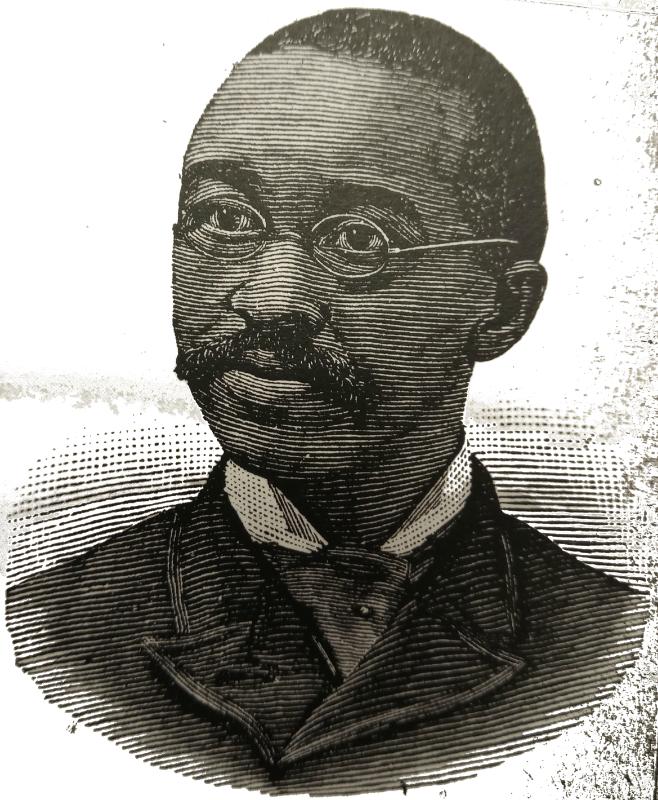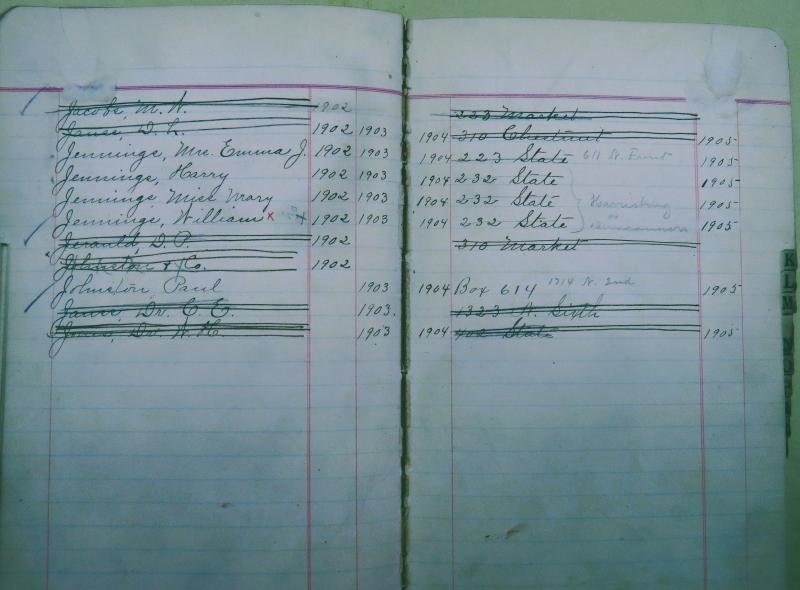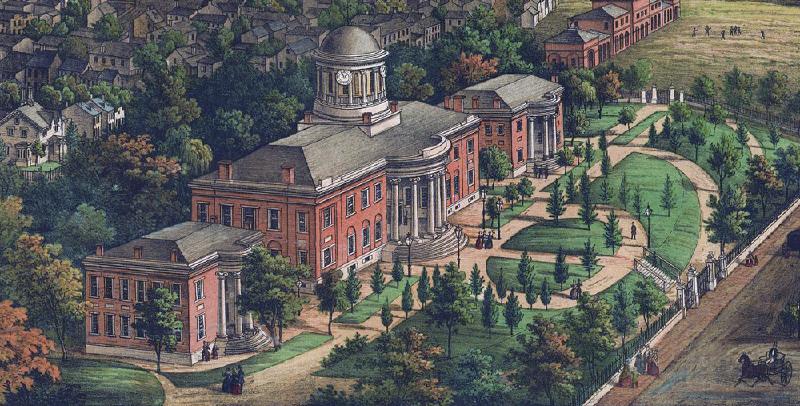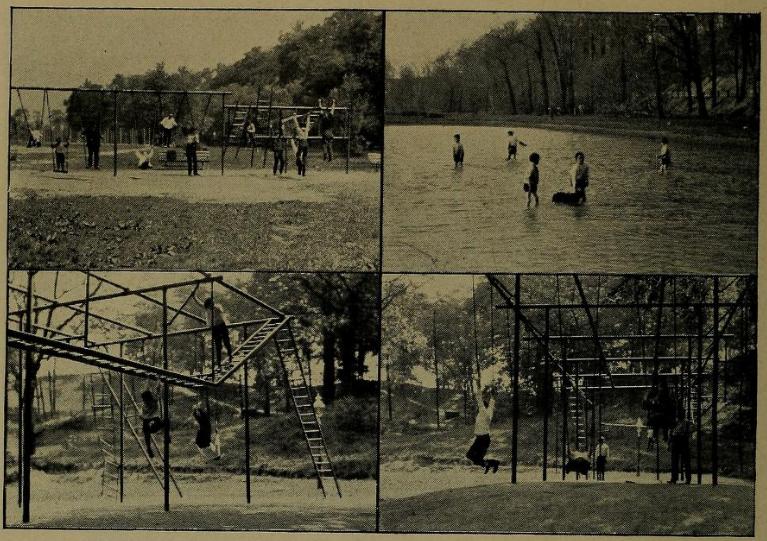Black Politics and City Beautiful
Dr. William H.C. Jones and the Eighth Ward

During a time when African American voices were rarely heard, Dr. Jones convinced Black residents of Harrisburg to offer their needed support to the City Beautiful Movement.
On December 20, 1900, Mira Lloyd Dock gave a presentation before the Harrisburg Board of Trade with nearly 100 slides comparing Harrisburg’s badly maintained riverfront with those of some well-kept cities in Europe. She argued that Harrisburg had the space and natural resources to be sanitary and beautiful if the city put in the effort. Her speech sparked the City Beautiful movement that spanned the early 1900s (1901-1915) and resulted in a new capitol building, street and sewage improvements, and additional parks and playgrounds. To do all that, Dock needed support from the Board and Harrisburg’s communities. As a member of the Board of Trade, Dr. William H.C. Jones Jr was at Dock’s speech and became the only Black member of the Municipal League for Civic Improvement, a group organized in May 1901 to drive the movement. The League needed the support of the Eighth Ward where Jones lived, so he used his respectability to influence the large African American and immigrant populations there to endorse the beautification of Harrisburg.
Dr. William H.C. Jones Jr was born in 1860 in Snow Hill, Maryland to William H. and Esther Jones. He studied medicine at Howard University and the New York Polyclinic Institute before moving to the Eighth Ward of Harrisburg in September 1887. He was a highly respected medical professional and played an active role in a variety of Harrisburg communities with both Black and White residents, especially those in the Eighth Ward. A generous man, he donated to poor houses, flood survivors, and John Harris’s Memorial.
One of his obituaries described him as someone who was “active in the advancement of Harrisburg, and [prominent] in professional and business life.” Indeed, he was appointed to a juvenile court board of inquiry in 1902 and elected as a School Board Director representing the Eighth Ward from 1902-1904. He was president of the Baker Building and Loan Association and a member of the John Harris Memorial Committee. He served as a common councilman for the Eighth Ward and the medical examiner of Brotherly Love Lodge, No. 896, Grand United Order of Odd Fellows. Professionally, he was a member of the American Medical Association and the Pennsylvania State Medical Society, a charter member of the Harrisburg Academy of Medicine, and the only Black man to serve as president of the Dauphin County Medical Society.
Deeply involved in the communities of Harrisburg, Jones championed the City Beautiful movement from 1901 until his death on January 19, 1905. He wanted to convince the African American community in the Eighth Ward that improving the city would bring changes the city desperately needed. The Eighth Ward was not only one of the most densely populated areas of the city, but a primary neighborhood for African American residents, white populations of lower socio-economic status, and immigrants from Hungary, Italy, Greece, and the Russian-occupied territories, among others. Jones, along with several others in the ward, pushed the neighborhood to support the improvements. Due to his strong relationships and influence in the community, he was able to use his medical knowledge and leadership to help gather support for the city improvement project.
The committee appointed by the Board of Trade in 1901 was tasked with organizing a mass meeting of citizens to discuss how to improve Harrisburg. As an original member of this group, Jones presided over meetings within the Eighth Ward. He led the first meeting that occurred at the Wesleyan African Methodist Episcopal Church on January 31, 1902, just before the city-wide vote to decide on the changes proposed by the Harrisburg City Municipal League. Newspapers, including the Harrisburg Patriot, noted hundreds in attendance. Jones and other notable leaders spoke at the gathering, including Reverend F. H. Hill, the pastor of the church, Spencer C. Gilbert, a board member for Public Works, and J. Horace McFarland, a key architect of the City Beautiful movement. All of these speakers emphasized their desire for change, progress, and overall beautification of the city. They also included demonstrations emphasizing health benefits and plans for cleanliness, two major driving forces for the movement.
Since companies had been dumping sewage waste into the Susquehanna River for several years, Jones was convinced that telling residents about its connection with disease would help gather support to clean it up. By conserving Paxton Creek and the banks of the Susquehanna River, Jones believed that residents of the whole city would benefit physically from the sanitized water. Similarly, parks would beautify the city while providing clean places to be outside. During the time that Jones served as president of the Dauphin County Medical Society, the organization recommended specific quarantine periods for diphtheria and scarlet fever to the sanitary committee. At the same meeting, other groups addressed sites for parks, putting in sewers, and permitting more telephone lines in the city. Jones continually argued for better sanitation while he worked to gather support and money for the movement in the Eighth Ward. As a resident of the ward and the only Black member of the Municipal League for Civic Improvement, Jones had a unique opportunity to shape conversations surrounding the ward and the movement.
The neighborhood of the Eighth Ward was an ethnically diverse community within Harrisburg City. While representation was poor and many voices of the African American community were left out of the decision-making process, prominent leaders like Jones led the community to support the movement. Jones’ main influence was in the first precinct of the Eighth Ward, the southernmost district where many African Americans resided. This precinct voted overwhelmingly in favor of improvements in 1902. Of the 272 votes recorded for the bond issue that year, 261 voted in favor of improvement. This 96% acceptance rate was the highest of any of Harrisburg’s precincts. Jones’ efforts created a tentative bond of trust between residents of the Eighth Ward and city leadership looking to build a stronger capital city.
On the morning of January 19, 1905, Dr. William Harrison Jones Jr. tragically died from double pneumonia after a fall down the capitol steps weakened his body. His fiancé, Margaret Lewis, was at his side when he passed away. Many prominent citizens spoke at his funeral, including Dr. Charles H. Crampton, the future deputy secretary of the State Health Department, Thomas McDowell Jones, an associate editor of the Harrisburg Daily Telegraph, and Benjamin Matthias Nead, a lawyer and politician. The eulogies they gave commended Jones as a businessman, physician, Christian, citizen, philanthropist, and educator. After this untimely loss, the community commemorated his life with the Dr. William Harrison Jones memorial entrance and fountain at a Twelfth Street playground in 1915. An automobile parade celebrating 15 years of public improvements in Harrisburg included the dedication of the memorial entrance. This allowed people to formally recognize Jones’ contributions to the City Beautiful movement as a talented doctor and dedicated leader.
A full list of the resources used in this story can be found here.
Images






